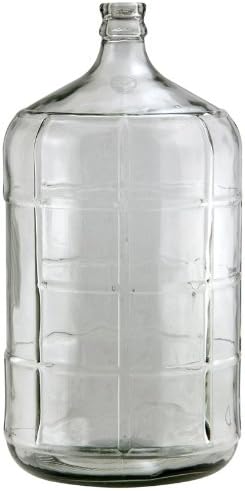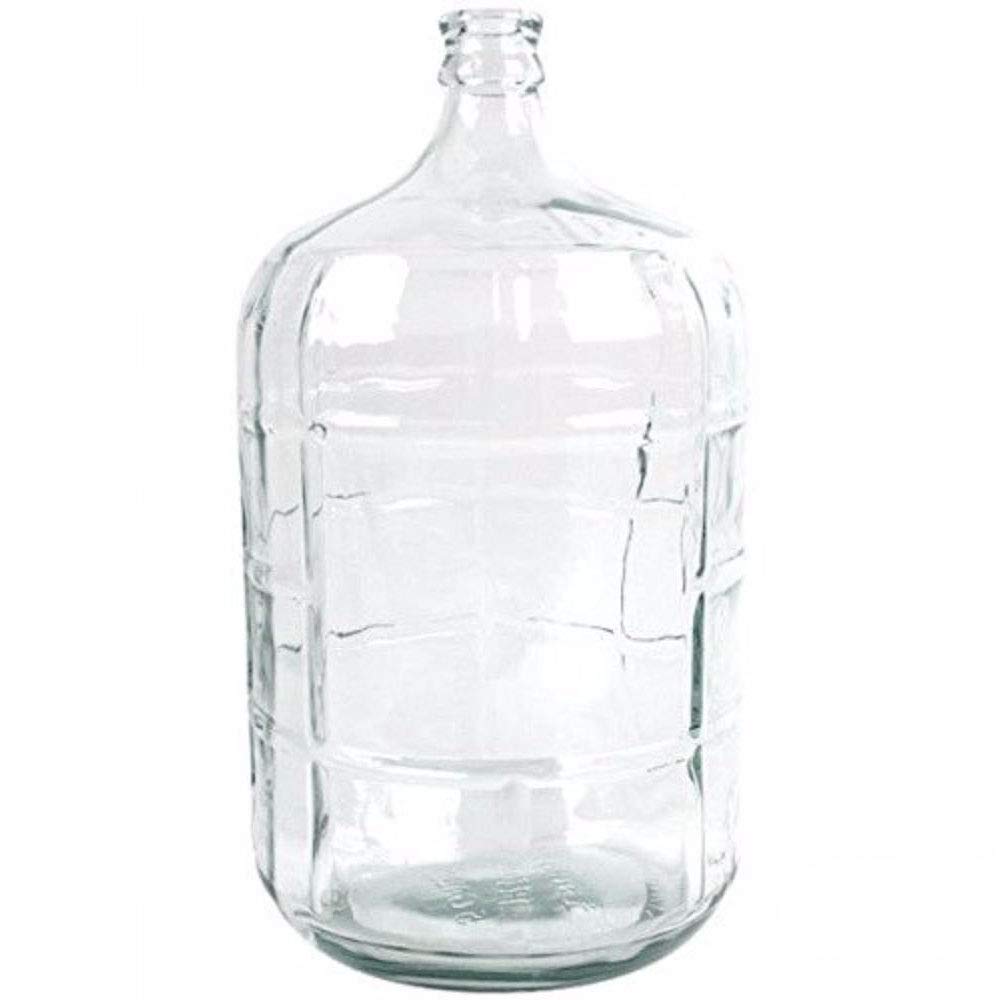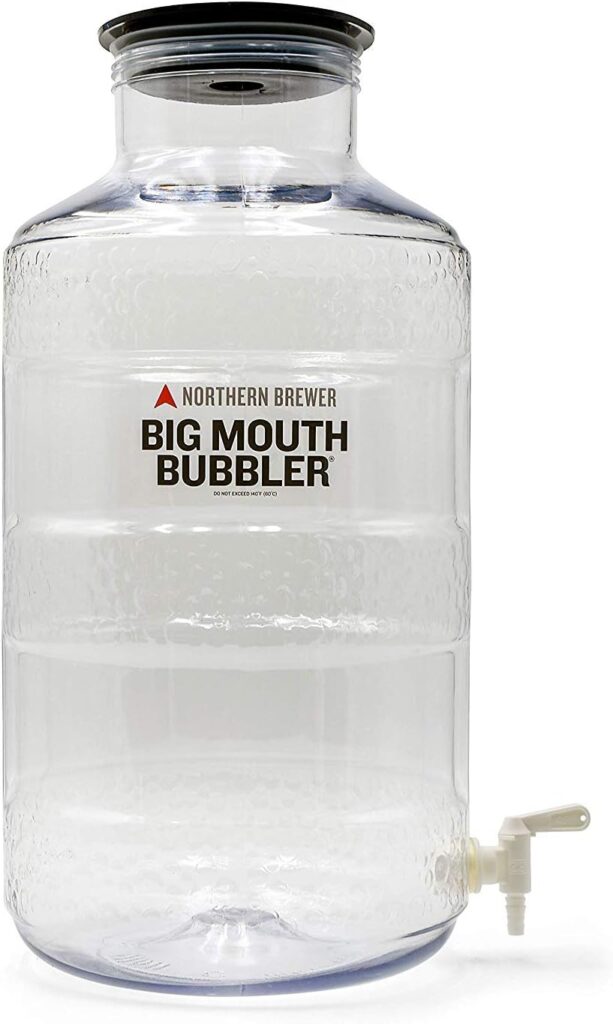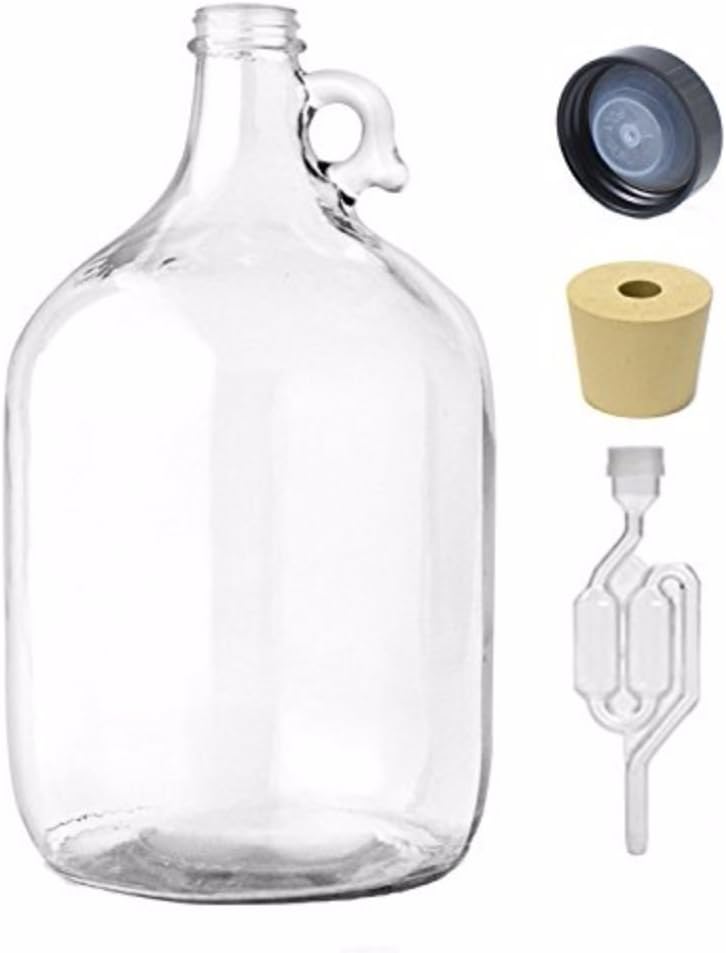The fermentation process is easily a make or break step in a great homebrew. Brewing can be a lot of work so anything going wrong at the last minute can be extremely frustrating and expensive.
This is why serious brewers invest a lot in proper brewing equipment.
Carboys are very popular in the homebrewing niche and many people consider them to be an essential part of any brewing set up.
What is a Carboy?
A carboy is a rigid, globular container with a narrow neck and typically has a capacity of anywhere from 1 to 16 gallons.

These containers may be made from glass or plastic and are used for fermenting brews including beer, cider, kombucha, and wine.
Other names for carboy include jimmyjohn and demijohn.
Why Use a Carboy?
You don’t need to throw out your fermentation bucket just yet. Fermentation buckets are great for primary fermentation. The wide mouth is easy to pour hot wort into while the head space provides plenty of room for the krausen to grow during the fermentation.
Carboys are especially suited for secondary fermentation. The clear container lets you monitor the process. You don’t have to open the lid to check on the brew, which reduces the chances of introducing contaminants and disturbing the krausen or trub.
Carboys also have limited space at the top due to the tapered neck. This allows for oxygen to flow upwards and out of the container through a blow-off tube or airlock.
You can enjoy these same benefits by using a carboy for primary fermenting.
Glass vs. Plastic Carboys
There is a raging debate in homebrewing circles on which is better; glass or plastic carboys.
The brewing purist will answer glass but the right answer is not that simple.
Glass Carboys Pros & Cons
Glass carboys are the traditional option used for brewing throughout history and for good reason. Glass doesn’t degrade easily (unless shattered) so a glass carboy is a one-off purchase for many brewers.
The smooth interior and exterior glass surfaces prevent contaminants and odors from sticking to the container. This allows you to get through different brews without retaining any of the aromas, flavors, or byproducts of the previous brew.
Glass is also very easy to clean.
The downside of glass carboys is they tend to be heavy. These containers are made from thick and heavy glass which can make the container difficult to transport especially when full.
There is also the potential danger of shattering or breaking a glass carboy accidentally.
Plastic Carboys Pros & Cons
Plastic carboys do have their advantages. They are lighter than their glass counterparts, weighing up to 4 times less than glass. This makes transporting the brew easier. The polyethylene construction also provides a better grip surface than smooth glass.
Plastic carboys also tend to be cheaper which is good if you are trying to keep your overheads to a minimum.

The downside of plastic carboys is the polyethylene construction is prone to scratches. Scratches on or in the container create spaces where bacteria can hide and grow which is bad news for your beer.
Plastic carboys can also be difficult to clean since using a stiff brush or other cleaning equipment can scratch the surface. Finally, plastic carboys have a far lower lifespan than glass options and typically require replacing after every 20-30 uses.
Best Carboys for Brewing Review
So which are the best Carboys on the market? We have reviewed 4 great options that cater to everyone from a first-time brewer to a seasoned brewmaster working on upgrading his set-up.
Kegco KC FP-CB-06 Glass Carboy

[amazon box=”B00JWYRGU2″]
The Kegco KC FP-CB-06 Glass Carboy ferments up to 6 gallons of wort which is great if you typically brew big batches. This carboy is made from high-quality thick glass and will last for decades with proper care and handling.
You don’t have to worry too much about transporting such a large and heavy container. This Kegoc carboy comes with sturdy nylon straps for easy transportation.
The smooth interior surface means that sediment doesn’t stick to the sides of the container as is often the case with plastic carboys. This is a great choice for intermediate to seasoned brewers or people who brew more than 10L at a time.
BeautyFamily 5 Gal Glass Carboy

[amazon box=”B00WK09TVE”]
BeautyFamily is a solid brand in homebrewing circles so it is no surprise that the BeautyFamily 5 gal Glass Carboy makes an appearance in this review.
This option is slightly smaller than the Kegco but holds up to 5 gallons of wort which is still a decent-size brew. The thick walls are impervious to cracks and scratches which can be breeding grounds for bacteria and other contaminants you don’t want in your beer.
The vertical and horizontal divots on the outside surface of the glass are a thoughtful addition that helps immensely with gripping the carboy. The smooth, rounded-edge top works with most standard blow-off hoses, bubblers, and airlocks which is perfect for the fermentation process.
Overall, this is a great product from BeautyFamily worth considering seriously.
Northern Brewer – Big Mouth Plastic Carboy

[amazon box=”B011VDMYAI”]
Brewing purists who swear by glass carboys may consider changing their minds with the Northern Brewer – Big Mouth Plastic Carboy.
This is a decent-size carboy at 6.5 gallons capacity. As the name suggests, this PET plastic carboy has an extra-wide mouth that you don’t usually find on a glass version. The wide top makes it easy to pour in the wort and makes cleaning a breeze.
You also have plenty of space to work with your equipment during the fermentation process.
The top has a tight-fitting lid with a hole in the middle for fitting a blow-off valve or airlock.
The drain at the bottom of this carboy tops off the already great features, making this a very versatile and convenient container for fermenting beer.
Home Brew Ohio 1 gal Jug

[amazon box=”B01BO12A0G”]
The Home Brew Ohio 1 gal Jug is a best seller and the perfect option for a beginner or for someone who makes small batches at a time. This is more of a fermenting kit than a traditional carboy and is very useful for small batches.
The glass jar comes with accessories including a twin bubble airlock for venting, a drilled rubber stopper that stays tightly in place, and a polyseal to keep the contents of your container intact.
The glass construction on this jug is durable and won’t let any odors or contaminants into your brew. The handle at the top of the carboy along with the small container size makes transport and storage easy.
This glass jar is affordable so you can easily buy a couple to keep handy for larger brews.
This option is perfectly suited to tabletop brewing equipment. This jug would also come in handy when testing recipes with small batches.
Final Thoughts on the Best Carboys for Brewing
Adding a carboy to your homebrewing set up could make all the difference in beer quality and taste. Opening your fermenting bucket to check on the brew’s progress increases the chances of introducing bacteria and other contaminants to your wort.
Keep in mind that it is good practice to change your fermenting bucket every so often. A good quality glass carboy could save you the cost and hustle of replacing the bucket, which some sources suggest should be changed as often as after every 5 brews.
There are also some great plastic carboys that rival their glass counterparts.
Having the right equipment can make all the difference in the final flavor, clarity, and quality of your brew. Consider adding a carboy to your brewing arsenal to bring the best out of your brewing technique and recipes.